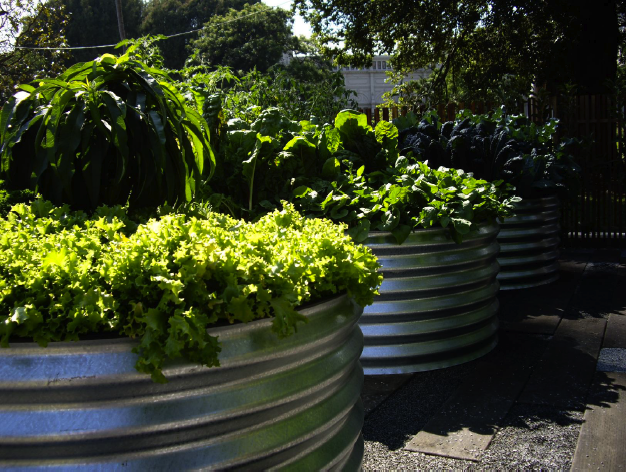VEGETABLES IN MID SUMMER
By Graeme Davis

This time of the year the vegetable patch should be in full growth and we should be being kept busy weeding, watering and picking. For most of us there are not too many vacant spaces to be filled so we are not concentrated on what to plant. But we should!
Cabbages, Broccoli and Cauliflower
This is one of the most critical planting times when the vegetables such as broccoli and cabbages that we can grow over winter are getting themselves established.
Four or five months of harvest – May through to September – is set up by having well established plants by around mid March. I normally think of this as planting seeds in January. But where to put them? Each plant takes up a considerable space and most books seem to assume we all have significant area to grow our vegetables.
Carefully planning ahead can help out. For example, identify in mid winter this year where you want to grow the broccoli for next year making sure it is somewhere different from where they are this year or the year before. This area then become the place to grow the onions, garlic and, if you want them, early potatoes or even the early beans. This might mean rather than growing a row of onions here and there that you grow a block. After these crops mature and are harvested the soil can be prepared with the addition of organic matter in time to plant out.
So that helps out for next year but what can you do this year? If you have no space that you identify to plant out in so the plants are well established by mid March you can get them established in individual pots and plant those out in April. This is harder work and the results are often not as good but it does provide another option.
The other big challenge with these plants is keeping cabbage white butterfly at bay. During late summer and Autumn they seem to be particularly active – making a mess of small plants quickly. There are three main options:
- Exclusion – put a barrier between the butterfly and the plant – there are a range of exclusion fabrics available.
- Physical removal – you have to be there every day and with small plants damage can happen very fast.
- Regular spraying – a range of products can help but they all need regular reapplication and, of course, only spray what you want to eat!
Problems in Summer
A range of problems can emerge in the vegetable patch in summer. A few of the regular ones include blossom end rot in Tomatoes, and “my beans have flowered but where are the beans?”
Blossom end rot is just what it says – the tomato rotting from the blossom end (you can also get this in other fruits such as capsicum and egg plant). It is not caused but a disease or pest so do not look for a spray to solve it. The problem is a lack of calcium the plant. This may be due to an acid soil – check the ph and, if necessary add lime. However, the usual problem is not the ph – rather it happens when there is uneven water availability or when plants are over fertilised and growing too fast. The solution then is simple – limit fertiliser, apply regular deep watering, encourage a strong root system, and mulch.
Last year, and I suspect again this year, we will see strongly growing beans flower and then not see any beans develop. Again, this is not a disease or pest. The likely cause is that the beans flowered at the wrong time when temperatures were too high and humidity too low. The plants will realise they have no crop and will flower again reasonably quickly so just keep them growing well and the crop will come.





